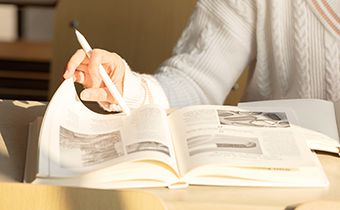为了促进学生掌握上课知识点,老师需要提前准备教案,大家正在计划自己的教案课件了。只有规划好教案课件计划,这样我们接下来的工作才会更加好!有哪些好的范文适合教案课件的?急您所急,小编为朋友们了收集和编辑了“八上英语Unit1 How often do you exercise?教案”,欢迎大家阅读,希望对大家有所帮助。
Unit1Howoftendoyouexercise?
1.疑问词how的用法
(1)怎样,用什么手段,方法/交通工具
Howareyou?/Howisshe?
Howdidhedoit?/Idon’tknowhowtoswim.
Howdoyoucometoschool?
(2)情况如何(指身体健康状况)Howareyou?
(3)howmany,howmuch表示“多少”
howmany后接可数名词复数,howmuch接不可数名词。
Howmanytimesdoyougotothepark?
Howmanypensdoyouwant?
Howmuchwaterdowedrinkeveryday?
Howmucharethosepants?
(4)howoften是对动作发生的“次数”提问,询问的是
频率“多久一次”
回答可以是:Everyday./Onceaweek./Threetimesaweek./Often./...
Howoftendoyouplaytennis?
HowoftendoyousurftheInternet.
(5)Howold...?询问年龄Howoldareyou?Iamfive.
(6)Howabout…?……如何?……怎么样?Howaboutgoingtothemovies?
2.time表示不可数名词,意为“时间”。
表示可数名词,意为“次数,倍数”
Whattimeisit?
Igotothemoviesthreetimesaweek.
注意“次数”的表达方法
一次once,两次twice,三次或三次以上用基数词加上times:
threetimes、fivetimes、onehundredtimes.
表示“……几次”的表达方法是:
onceaday/aweek/amonth/ayear
twiceaday/aweek/amonth/ayear
3.exercisev/nshopv/n
Heoftenexercisesonweekends.
Weoftendo/takeexerciseonweekends.
Weoftenshoponweekends.
Therearemanyshopsintheneighborhood.
4.asfor意为“就……而论”,“至于”
Asforfruit,Ieatitsometimes.
Asforhim,Ineverwanttoseehimhere.
至于他,我永远不希望在这里见到。
5.Mymotherwantsmetodrinkit.
我妈妈想要我喝。
wanttodosth.想要做某事
wantsb.todosth.想要某人干某事
Doyouwanttogotothemovieswithme?
你想和我一起去看电影吗?
Iwantyoutohelpmewithmymath.
我想要你帮我学数学。
有很多动词后面用这种结构做动词的复合宾语:
asksb.todosth.叫某人做某事
tellsb.todosth.告诉某人去做某事
helpsb.(to)dosth.帮助某人做某事
6.Shesaysit’sgoodformyhealth.
她说它对我的健康有意。
begoodfor...表示“对……有益(有好处)”
其反义为:bebadfor...对……有害/无益
Itsgoodforustodomorereading.
多读书对我们有好处。
Drinkingmilkisgoodforyourhealth.
喝牛奶对你的健康有益。
ReadingEnglishisgoodforstudyingEnglish.
对英语对学习英语有益/有帮助。
Readinginbedisbadforyoureyes.
在床上读书对你的眼睛有害。
7.usuallywhenIcomehomefromschool
通常是在我从学校回家时
When+从句当……时候
Ioftenstayathomewhenitisrainy.
8.Itrytoeatalotofvegetables.trytodosth.尽量/尽力做某事
I’lltrytolearnEnglishwell.我会尽量尝试学好英语的。
Youmusttrytotakemoreexercise.你必须尽量多做运动。
9.Ilookaftermyhealth.lookafter照顾
Mybrotherisill.Ihavetolookafterhimtoday.
我的弟弟病了。我今天不得不照顾他。
Allthestudentsmustlookafterthedesksandchairs.所有的学生必须照看好课桌椅。
Heoftenhelpshismotherlookafterhislittlesister.
他经常帮助他的妈妈照顾他的小弟弟。
10.Myhealthylifestylehelpsmegetgoodgrades.
我健康的生活方式帮助我取得好的成绩。
helpsb.(to)dosth.帮助某人做某事
Sheoftenhelpsmelearnmath.她经常帮助我学数学。
11.Goodfoodandexercisehelpmetostudybetter.
好的食物和运动帮助我学习得更好。
helpsb.(to)dosth.帮助某人做某事
12.Isherlifestylethesameasyoursordifferent?
=Isherlifestylethesameasyourlifestyleorisherlifestyledifferentfromyourlifestyle?
她的生活方式和你的一样或是不同?
bethesameas…/bedifferentfrom…与……一样/与……不同
Shelooksthesameashersister.她看起来跟她的妹妹很像。
Thisbookisdifferentfromthatone.这本书跟那本书不一样。
13.IthinkI’mkindofunhealthy.我想我有点不健康。
kindof=alittleakindof一种
14.maybe(adv.)=perhaps也许,可能Maybeheknowstheanswer.
Maybethey’llgoskateboarding.Hemayknowtheanswer.
15.although=though虽然Althoughhe’sill,hegoestoschoolontime.
虽然他生病了,但他还是准时上学。
Sheeatsalotofchocolate,althoughsheisveryfat.虽然她很胖,但她却吃许多的巧克力。
16.Alotofvegetableshelpyoutokeepingoodhealth.
Alotof=lotsof=many/much许多
keepingoodhealth=keephealthy=stayhealthy
keep+形容词表保持某种状态
Keepquiet!Thebabyissleeping.
那婴儿正在睡觉,保持安静!
Wemustkeepourclassroomclean.
我们必须保持我们的教室干净。
17.注意sometimes与几个形似的词的区别。
(1)sometime是副词,意为“在某个时候”,“某时”
Willyoucomeagainsometimenextweek?
下周的某个时候你会再来吗?
Shewastheresometimelastyear.
她去年某时去过那。
(2)sometime是名词词组,意为“一段时间”,做时间状语用
Iwillstayhereforsometime.
我将在这呆一段时间。
Heworkedforthatcompanyforsometime.
他为那家电脑公司工作了一阵子。
(3)sometimes是名词词组,意为“几次,几倍”
Imethimsometimesinthestreetlastmonth.
上个月我在街上遇到他好几次了。
Thefactoryissometimeslargerthanthatone.
这间工厂比那间大好几倍。
(4)sometimes是频度副词,意为“有时”
Hesometimesgoesskateboardingonweekends.
他有时周末去滑滑板。
18.Thatsoundsinteresting.那听起来有趣。
sound(听起来),look(看起来),smell(闻起来),taste(尝起来),feel(觉得),seem(好象),grow(变得),get(变得)等词在英语中可用作系动词,后跟形容词作表语。
Ittastesgood.这味道好。Themusicsoundsverysweet.
这音乐听起来很入耳。
扩展阅读
Unit 1 How often do you exercise?教案
Unit1Howoftendoyouexercise?教案
本节课总目标描述
通过本节课的学习学生能掌握以下基本句型:Howoftendoyoubrushyourteeth?Ibrushmyteethtwiceaday.本节课的总体设计体现了新课程标准中的从学生的学习兴趣、生活体验和认知水平出发,倡导体验、实践、参与、合作与交流的学习方式和任务型的教学途径的教学理念。
预想的效果是:学生感受到课堂45分钟大多数时间是在做一件有意义而且较为感兴趣的事,这种愉悦的心情促使学生自主、创造性地完成任务,即培养了学生运用英语进行实际交际的能力。这种体验和感悟是新课程标准的基本要求。
教学重点和难点:
合理运用本单元句型进行交际;
熟练使用频率的表达方式。
Leadin:letstudentspayattentiontotheimportanceofbrushingteeth.
Task1:Howoftendoyoubrushyourteeth?
Task2:Howdoyouprotectyourteeth?
Task3:Whoisthebestteethprotector?
Lead-in由小实验导入我们应爱护我们的牙齿。
ThisexperimentsimulatestheprotectionpowerofFluoride.
Whatyou’llneed:
1bottleofFluoriderinsesolution(availablefromyourdentist,localdentalsupplycompanyandsomepharmacies)
2eggs1bottleofwhitevinegar3containers
Whattodo:
PourfourinchesofFluoriderinsesolutionintooneofthecontainersandthenplaceanegginthesolution.Letitsitforfiveminutes.Removetheegg.Pourfourinchesofvinegarintoeachoftheremainingtwocontainers.PuttheeggthathasbeentreatedwiththeFluorideintoonecontainerofvinegarandtheuntreatedeggintheothercontainerofvinegar.
Whatwillhappen:
Oneeggwillstarttobubbleasthevinegar(anacid)startstoattackthemineralsintheeggshell.Whicheggdoyouthinkwillstarttobubble?
2.学生仔细的观察试验的结果。通过试验让学生意识到保护牙齿的重要性
3.由学生brainstorm保护牙齿的正确的方法。并发给学生表格在小组内对小组的成员进行问卷调查。
Howoftendoyoubrushyourteeth?
Seldom
Onceaday
Twotimesaday
Aftereachmeal
Howlongdoyoubrushyourteeth?
30seconds
1minute
2minutes
Longerthan2minutes
Whattypeoftooth-brushdoyouuse?
Idontknow
Medium
Soft-bristled
Extrasoft-bristled
Doyouusetoothpastewithfluorine?
No
Yes
Howoftendoyoueatsweets?
Manytimesaday
Twiceaday
Onceaday
Onceaweek
Howoftendoyouseeyourdentistforapreventivecheck-up?
Never
Onceinseveralyears
Onceayear
Twiceayear
Howoftendoyouchangeyourtoothbrush?
Yearly
Every3-4months
Every6months
Howoftendoyouflossbetweenyourteeth?
Never
Occasionally
Daily
4.小组内调查并做完报告后,小组内讨论什么是正确保护牙齿的方法,并选出最讲究牙齿卫生的标兵。
5.扩展话题:
Howoftendoyoucutyourhair?
Howoftendoyoucutyournails?
Howoftendoyouwashyourhands?
Howoftendoyouwashyourhair?
Howoftendoyouchangeyourunderwear?
Howoftendoyourhaveabodycheck?
教案点评:
本节课的设计与学生的日常生活紧密相连,所以任务的设计具有真实性。
首先由一个小的实验引入本课,这样可以引起学生的兴趣,并能帮助学生意识到保护牙齿的重要性。并能让学生的注意力马上集中到课上来。第二步,通过pairwork让学生互相了解彼此的刷牙习惯并比较有什么不同。第三步,让学生小组讨论出什么是保护牙齿的正确方法。并通过问卷的形式,在小组内评选出保护牙齿的小卫士。
通过本节课的学习学生应用所学的句型解决生活中实际的问题。并向学生介绍中西文化关于牙齿保护的不同。
How often do you exercise?教案
Unit1Howoftendoyouexercise?
Teachinggoals:
1.Words&phrases:howoften,hardly,twice,once,difference,lookafter,although,etc.
2.Learntotalkabouthowoftendoyoudothings.
3.一些表示频率的副词:always,usually,often,never,hardlyever,sometimes.
4.句子结构:Whatdoyouusuallydoonweekends?
Howoften•••?及回答.
Importantanddifficultpoints:
Whatdoesshe/hedoonweekends?
Sheoftengoestothemovies.
Howoftendoyoushop?
Onceaweek/Twiceaweek•••.
Teachingaids:cards,picturesandataperecorder.
Period1
Teachingprocedures:
Step1Leading-in
1.Greetings:Talkaboutsomethingthestudentsdidon
summervacation.
Step2Pre-task
SBPage1,1a.
1.Lookatthepicture(学生识图).
2.Nameeachactivity.
T:Whataretheydoing?
Theyareshopping/reading/exercising/watchingTV/skateboarding.(Helpthestudentstoanswer)
3.Writetheactivitiesontheline.
4.ChecktheanswersontheBb.Correcttheirownactivities.
5.Practisereading.
SBPage1,1c.
1.Focusontheconversationinthebox.
2.Practisereading.
3.Pairwork:Whatdoyoudoonweedends?I•••.
4.Groupwork:Dividetheclassintogroupsoffourorfive.Makeconversations.FirstS1toS2:
S1:Whatdoyoudoonweekends?
S2:I•••.
S1:Whatdoesshe/hedoonweekends?
S2:She/He•••.
5.Actouttheirowndialogues.
Step3While-task
SBPage1,1b.
1.Lookateachpicturein1c.Tellwhatthepersondoesonweekends.ChecktheSsorally.
2.Makesurewhattheywillhearanddo.
3.Readtheseadverbsandexplain.
4.Playthetapetwice.Writethelettersontheline.
SBPage2,2a&2b.
1.readtheactivitiesandtheanswersof“howoften”first.
2.Practisereading.
3.In2aweshouldknowtheactivitiesyouhear.In2bweshouldknowtheanswersofhowoftenhedoestheactivities.
4.Playthetapeforafirsttime.Ssonlylisten.
5.Playthetapeasecondtime.Ssdo2a.
6.Playthetapeathirdtime.Checktheanswers.
7.Playthetape.Ssdo2b.
8.Checktheanswers.
Inthispart,weshouldpayattentiontohowoften引起的特殊疑问句及回答.
Step4Post-task
SBPage2,2c.
1.Focusontheconversation.
2.Practicereading.
3.Readtheactivitiesintheleftbox.
4.Fillinthechart.
5.Pairwork:Makeconversations.
Period2
Teachingprocedures:
Step1Leading-in
1.Greetings
2.Drills:
T:Whatdoyouusuallydoonweekends?
S1:Iusuallyplaysoccer.
T:Howoftendoyouplaysoccer?
S1:Iplaysoccertwiceaweek.
T:Howoftendoesheplaysoccer?
TheotherSs:Heplayssoccertwiceaweek.
Repeatforthreetimes.
Step2Pre-task
SBPage2,GrammarFocus.
1.Reviewthegrammarbox.Sssaythequestionsandanswers.
2.Practisereading.
Step3While-task
SBPage3,Part3.
1.Callattentiontothesurvey.MakesuretheSsunderstandthechart.
T:Whatactivitydoninety-fivepercentofGreenHighstudentsdoeveryday?
Ssanswer.Ifnecessary,givethemhelp.
2.ReviewtheinformationinthegreenboxwithSs.
3.ReadthearticlefirstbytheSs.
4.Readittotheclass.
5.Lookatthesurveyandfillintheblanksinthearticle.
6.Finishtheactivityindividually.
7.Checktheanswers.
8.Practisereading.
Step4Post-task
SBPage3,Part4.
1.T:WhatcanyoudotoimproveyourEnglish?(e.g.readEnglishbooks,practicereadingandspeaking)Howoftendoyou•••?
2.ThinkofmorethingsyoucandotoimproveyourEnglishandwritethemhere.
3.AskseveralSseachquestion.
4.See:WhoisthebestEnglishstudentsintheclass
Homework:
Revisethenewwords.
Period3
Teachingprocedures:
Step1Leadingin
1.Greetings&freetalk.
2.PractisereadingthearticleinPage3.
3.Checkthehomework.
Step2Pre-task
SBPage4,1a.
1.Pointoutthefivephrases.
2.Ssreadaftertheteacher.
3.MakesuretheSsunderstandwhatdotheymean.
4.Callattentiontothepictures.Saysomethingaboutthepictures.
5.Matchthewordswiththepictures.
6.Checktheanswers.
7.Practicereading.
Step3While-task
SBPage4,1b.
1.payattentiontotheconversationintheboxontheright.
2.Readittotheclass.
3.Explain:“begoodfor”means:有益于…,对…有好处.
4.Pairwork.Chooseanewpartner.UsethewordsinActivity1atomakeconversations.
5.Sharethestudents’conversations.
SBPage4,2a&2b.
1.T:Nowyouwillhearareporterinterviewtwopeople,Katrina&Bill.ReadthetwonamesfortheSs.In2a,we’llknowwhoishealthy,BillorKatrina?
2.Readthequestionsin2a.
3.Listentothetapecarefullytwice.Circle“yes”,“no”or“Idon’tknow”inthechart.
4.Beforewechecktheanswersin2a,we’llreadthroughthequestionsin2b.PayattentiontoKatrina’sandBill’sanswers.
5.Playthetapeagain.Thistime,ifwehaveheardonequestionsandwehaveapause.MakesureKatrina’sandBill’sanswer.
6.Fromtheanswersin2b,wecantellwhoishealthyBillorKatrina?
Step4Post-task
Role-play.
Groupwork.DividetheSsintogroupsofthree.S1isinterview,S2isKatrina,S3isBill.
S1:Howoftendoyouexercise?
S2:Iexerciseeveryday.
S3:….
Withthehelpof2b.
Homework
请同学们用2b里面的问题调查你熟悉的两位同学,写出答案并做比较.
Unit 1 How often do you exercise Section B 教案
为了促进学生掌握上课知识点,老师需要提前准备教案,准备教案课件的时刻到来了。在写好了教案课件计划后,新的工作才会如鱼得水!你们知道哪些教案课件的范文呢?以下是小编为大家收集的“Unit 1 How often do you exercise Section B 教案”但愿对您的学习工作带来帮助。
Unit1Howoftendoyouexercise?
SectionB
一、教师寄语
Aboldattemptishalfsuccess.(勇敢的尝试是成功的一半)
二、学习目标
知识目标:
Words:milk,junkfood,health,unhealthy,habit,exercise,most,result,try,differentmaybe,although,
Phrases:junkfood,asfor,onweekends,nostudents,trytodo,lookafter,kindof
Sentences:1.Butmymotherwantsmetodrinkit.
2.Shesaysit’sgoodformyhealth
3.Itrytoeatalotofvegetables.
4.Isherlifestylethesameasyoursordifferent?
能力目标:能描述课余时间的活动安排;会描述基本饮食结构。
情感目标:培养学生的逻辑表述能力,激发学生的积极思维,并使学生互相了解,增进友谊,加强人际交往,以形成良好的人际关系。
三、教学重、难点
区分Howmany/howmuch,health/healthy,different/difference
四、学习过程
1.预习导学或自测
1)很少/几乎不曾__________________2)surfthelnternet_______________________
3)大部分学生_____________________4)asfor________________________________
5)一周两次_______________________6)begoodfor________________________
7)照顾___________________________8)eatinghabits______________________
9)六到八次_______________________10)trytodosth________________________
2.自主学习exercise的用法。
(1)作可数名词复数exercises。意为“运动、体操”。
做早操做眼睛保健操
(2)作不可数名词,意为“练习、习题”。
eg:Ihaveto.我必须做大量练习
(3)作动词,意为“练习、运动”。
eg:—Howoftendoyouexercise?我天天锻炼
3.合作探究课文解析.3a
1)pretty表示“十分”作副词用,我们以前学过quite和very也有这种意思。其中它们的程度由浅入深为quite→pretty→very.相当健康:
2)Iexerciseeveryday,usuallywhenIcomehomefromschool.我每天锻炼身体,
3)eatinghabits:
4)trytodosth意为
eg:他尽力通过考试:
5)Ofcourse.:
6)Soyousee,Ilookaftermyhealth.所以你看,我很在意我的健康。
lookafter意为
eg:CanyouwhenIleave?能帮我照顾一下孩子吗?
look还可以和许多词搭配,但意思不一样。
(1)lookateg:Pleaselookattheblackboard.
(2)lookforeg:我在找我的笔
(3)looklikeeg::你爸爸长什么样?
7)Goodfoodandexercise好的饮食和锻炼帮助我学得更好。
帮助某人做某事
8)begoodforbegoodat=dowellinbegoodtosb.
9)和…相同与……不同
不同:(n.)difference.Therearemany(不同点)betweenthetwopictures.
10)although虽然,尽管,引导让步状语从句,与同义,
但不能与同时出现在一个复合句中,可与still,yet同用。
11)保持健康:=beingoodhealth=keep/behealthy
4.拓展创新注意sometimes与几个形似的词的区别。
a.sometime是副词,意为“在某个时候”,“某时”b.sometimes:有时候是副词。
c.sometime是名词词组,意为“一段时间”,做时间状语用
d.sometimes是名词词组,意为“几次,几倍”。
eg:(1)Imethiminthestreetlastmonth.
(2)Willyoucomeagainnextweek?
(3)Iwillstayherefor
(4)IwatchTVonweekends.
5.梳理归纳SectionB词组归纳:
1)begoodfor对什么有益2)bebadfor对什么有害
3)wanttodosth想做某事4)wantsbtodosth想某人做某事
5)trytodosth尽量做某事6)comehomefromschool放学回家
7)ofcourse=certainly=sure当然8)getgoodgrades取得好成绩
9)someadvice10)hardly=notnearly/almostnot几乎不
11)keep/beingoodhealth保持健康12)prettyhealthy相当健康
13)myeatinghabits我的饮食习惯14)drinkmilk喝牛奶
15)soyousee正如你所看到的16)lookafter照顾
17)myhealthylifestyle我的健康饮食习惯18)helpsb.dosth帮助某人做某事
19)thesameas和….一样20)bedifferentfrom与….不同
6.达标检测根据句意填词.
I.根据句意,用括号内所给词的适当形式填空。
1.Eatingjunkfoodisbadforyour______(healthy).
2.Pleasefindoutthe_____(different)betweenthispictureandthatpicture.
3.Thereislittlelightintheroom.Ican______(hard)seeanything.
4.MrWanggoestoShanghai______(one)ayear.
5.—Doyouwanttomeetthat______(interview)?—No,Idon’t.
II.VI.根据汉语意思完成下列各句,每空一词。
1.做眼保健操对你的眼睛有好处。
Doingeyeexercises_____________________youreyes.
2.我们尽量准时到达那里。
We______________getthereontime.
3.散步有助于保持健康。
Walkinghelpstokeep_____________________.
4.—你多长时间看一次电影?—我一个星期看两次。
—_____________doyouwatchTV?
—IwatchTVtwiceaweek.
5.每天运动对我们的健康有好处。
It’sgoodforourhealth_____________everyday.
五、典型例题解析
1..Butmymotherwantsmetodrinkit.但是我妈妈让我喝(牛奶)。
want用作及物动词,意为“想要”,其后可接名词、代词、不定式作宾语,
eg:Katrinawants.卡特里娜想和我们一起去看电影。
Davidwantsme.大卫想让我帮助他学英语。
2.Shesaysit’sgoodformyhealth.她说这对我的健康有益。
begoodfor表示,其反义词组是
begoodat表示,其同义词组是
eg:Ittogotobedearly.早睡对你有好处。
HeChinesenow.他现在擅长于中文。
3.Itrytoeatalotofvegetables.我尽量多吃疏菜。
trytodosth.意为
eg:I’lltry.我要设法学好英语。
注意:try后也可接v.ing形式。trydoingsth.意为表示想知道结果而尝试着做做看。Eg:Let’stry咱们敲敲门试试。
4.....andIthinkI’mkindofunhealthy.……我认为我有点不健康。
词语辨析kindof与akindof
(1)kindof相当于一个程度副词,用来修饰形容词的原级,意为,是一个固定短语,不能变形,=
Eg:Youare你有点累.
Thepandais这只熊猫有点机灵。
(2)akindof是一种起限定作用的短语,意为用在名词前。其中的kind为可数名词,意为,有单复数变化。
Eg:Anelephantis.大象是一种动物。
Therearefishintheriver.河里有各种各样的鱼。
(3)kind用作形容词,意为。常见结构bekindtosb.,意为“对某人和蔼(友好)”。
Eg:Theteachersinourschool.我们学校的老师对我们很和蔼。
六、中考链接
1.Ididn’tgototheparkwithmyclassmates,becausemymotheraskedmeto____mylittlesisterathome.(吉林省)
A.lookafterB.lookatC.lookforD.looklike
解析:四个选项中只有lookafter符合题意。选A。
2.Canyouspeakalittlelouder?Ican_____hearyou.(辽宁)
A.hardB.reallyC.hardlyD.clearly
解析:由前一句“你能说话大声点吗?”可知,后一句含有否定意义。选C。
3..Wehopeyourchildrengrowhappilyand_____(health).(山东)
解析:从语法角度来分析,此处应填一个副词来修饰动词grow。health是名词,其形容词为healthy,副词为healthily。填healthily。
七、课后反思
我的收获:
我的不足:
我的疑问:
Unit1SectionB
四、学习过程
1预习导学或自测/情景导入
1.hardlyever2.上网3.mostofthestudents4.至于5.twiceaweek6.对…有好处7.lookafter8.饮食习惯9.sixorseventimesaweek10.尽力做某事
2.自主学习exercise的用法。
(1)domorningexercisedoeyeexercise(2)dosomuchexercise(3)
Iexerciseeveryday.
3.合作探究
1.prettyhealthy.2.通常放3.饮食习惯4.尽力去做某事/Hetriedtopasstheexam.5.当然6.照顾、照看/lookaftermybaby(1)看,认真地看/请看黑板(2)寻找I’mlookingformypen/(3)看起来像Whatdoesyourfatherlooklike?7.helpmetostudybetter./.helpsb.(to)do/withsth.8.对…有好处/擅长于,在…学得好/对…很好9thesameas/bedifferentfrom/differences10.though/but11.keepingoodhealth
4.拓展创新1.sometimes/好多次2.sometime某个时间
3.sometime.一段时间4.sometimes有时候
6.达标检测
I.根据句意,用括号内所给词的适当形式填空。
1.health2.differences3.hardly4.once5.interviewer
II.VI.根据汉语意思完成下列各句,每空一词
1.isgoodfor2.tryto3.ingoodhealth4.Howoften5.toexercise
五、典型例题解析
1.togotothemoviewithus./tohelphimwithhisEnglish
2.对….有益/好处/bebadfor;/bebadfor;/dowellin/
/isgoodforyou//isgoodat
3.设法、尽力去做某事//tolearnEnglishwell
//试着做某事knockingatthedoor.
4.有点儿、稍微/alittle/kindoftired//kindofsmart.
一种/种类/akindofanimals/allkindsof//好心,仁慈的/areverykindtous
文章来源:http://m.jab88.com/j/83907.html
更多猜你喜欢
更多-
 Unit 1 How often do you exercise教案 集体备课卡课题 Unit1Howoftendoyouexercise?主备人 教者课型 new 课时 5 第1周 星期节数 设计理念根据教材的特点,本单元应该用“任务型教学模式”来教学。本单元共分Se...
Unit 1 How often do you exercise教案 集体备课卡课题 Unit1Howoftendoyouexercise?主备人 教者课型 new 课时 5 第1周 星期节数 设计理念根据教材的特点,本单元应该用“任务型教学模式”来教学。本单元共分Se... - How often do you exercise?教案 Unit1Howoftendoyouexercise? Teachinggoals: 1.Words&phrases:howoften,hardly,twice,once,difference,loo... 高中教案教案 04-21
- Unit 1 How often do you exercise Section B 教案 Unit1Howoftendoyouexercise? SectionB 一、教师寄语 Aboldattemptishalfsuccess.(勇敢的尝试是成功的一半) 二、学习目标 知识目标: Wor... 高中教案教案 04-22
- How often do you exercise SectionA 教案 Unit4Howoftendoyouexercise? SectionA3—4教学课例 Howoftendoyouexercise? 七年级下册Unit4sectionA3—4教学课例 一教学目标设计... 高中教案教案 04-23
最新更新
更多-
 牛津8BUnit5Internationalcharities教学案 每个老师在上课前需要规划好教案课件,是时候写教案课件了。只有规划好新的教案课件工作,才能更好的在接下来的工作轻装上阵!你们会写适合教案课件的范文吗?为了让您在使用时更加简单方便,下面是小编整理的“牛津8BUnit5Internationalcharities教学案”,仅供参考,大家一起来看看吧。8B...
牛津8BUnit5Internationalcharities教学案 每个老师在上课前需要规划好教案课件,是时候写教案课件了。只有规划好新的教案课件工作,才能更好的在接下来的工作轻装上阵!你们会写适合教案课件的范文吗?为了让您在使用时更加简单方便,下面是小编整理的“牛津8BUnit5Internationalcharities教学案”,仅供参考,大家一起来看看吧。8B... - 牛津8B英文全套教案7 每个老师上课需要准备的东西是教案课件,规划教案课件的时刻悄悄来临了。是时候对自己教案课件工作做个新的规划了,接下来的工作才会更顺利!你们了解多少教案课件范文呢?考虑到您的需要,小编特地编辑了“牛津8B英文全套教案7”,希望对您的工作和生活有所帮助。牛津8B英文全套教案Step2Practicinga... 牛津英语高中教案 04-23
- 五年级语文下册《老人与海鸥》教案鲁教版 相信很多老师都希望自己的课堂上同学们能够积极的与自己互动。老师需要做好课前准备,编写一份教案。上课自己轻松的同时,学生也更好的消化课堂内容。那么老师怎样写才会喜欢听课呢?下面是小编为大家整理的“五年级语文下册《老人与海鸥》教案鲁教版”,供大家参考,希望能帮助到有需要的朋友。五年级语文下册《老人与海鸥... 小学语文五年级教案 04-23
- 五年级语文《梦圆飞天》知识点苏教版 在上课时老师为了能够精准的讲出一道题的解决步骤。通常大家都会准备一份教案来辅助教学。这样可以有效的提高课堂的教学效率,你知道有哪些教案是比较简单易懂的呢?下面是小编为大家整理的“五年级语文《梦圆飞天》知识点苏教版”,仅供参考,但愿对您的工作带来帮助。五年级语文《梦圆飞天》知识点苏教版2003年10月... 小学语文五年级教案 04-23
- 五年级语文下册《左公柳》教案分析 作为杰出的教学工作者,为了教学顺利的展开。为了不消耗上课时间,就需要有一份完整的教学计划。从而以举一反三的方式学会其他的知识点,那有什么样的教案适合新手教师吗?以下是小编为大家收集的“五年级语文下册《左公柳》教案分析”,仅供参考,欢迎大家阅读。五年级语文下册《左公柳》教案分析22左公柳教学目标:1.... 小学语文五年级教案 04-23
- 五年级语文下册《草原》第二课时复习学案 作为杰出的教学工作者,为了教学顺利的展开。这时就需要自己去精心研究如何做一份学生爱听老师爱讲的教案。这样不仅拉进了学生与自己的距离,还让学生学到了知识,那么优秀的教案是怎么样的呢?以下是小编收集整理的“五年级语文下册《草原》第二课时复习学案”,供您参考,希望能够帮助到大家。五年级语文下册《草原》第二... 小学语文五年级教案 04-23
- 五年级语文《鼎湖山听泉》知识点复习苏教版 为了使每堂课能够顺利的进展,在上课前要仔细认真的编写一份全面的教案。这样我们可以在上课时根据不同的情况做出一定的调整,你们知道那些比较有创意的教学方案吗?为了让您在使用时更加简单方便,下面是小编整理的“五年级语文《鼎湖山听泉》知识点复习苏教版”,仅供参考,希望能为您提供参考!五年级语文《鼎湖山听泉》... 小学语文五年级教案 04-23
- 八年级英语HesaidIwashardworking教学设计 每个老师不可缺少的课件是教案课件,大家在仔细设想教案课件了。教案课件工作计划写好了之后,这样我们接下来的工作才会更加好!你们会写一段适合教案课件的范文吗?下面是小编帮大家编辑的《八年级英语HesaidIwashardworking教学设计》,仅供参考,大家一起来看看吧。Unit4HesaidIwas... 小学五年级英语教案 04-23
- How often do you exercise?教学设计 教案课件是每个老师工作中上课需要准备的东西,是认真规划好自己教案课件的时候了。只有规划好教案课件工作计划,才能更好地安排接下来的工作!究竟有没有好的适合教案课件的范文?为此,小编从网络上为大家精心整理了《How often do you exercise?教学设计》,欢迎阅读,希望您能阅读并收藏。... 安慰教学设计 04-23
热门推荐
- 《生命 生命》教学设计
- “宁为战死鬼,不作亡国奴”
- Unit 1 How often do you exercise? 第一课时教学设计
- 八年级下册英语Unit 10 I have had this bike for three years教学案(人教新目标版)
- 方程的近似解
- 凸透镜成像规律导学案
- 八年级语文桥之美教材分析
- 中考数学基本图形、相交线与平行线复习
- 收入分配与社会公平
- 初二数学上册知识点:二元一次方程
- 四年级数学下册四则运算知识总结
- 九年级化学上册《燃烧条件与灭火原理》第一课时教材分析
- 七年级语文下册第二单元复习
- 电流的测量
- 世界的气候
- 九年级化学第八单元知识点归纳
- 初三物理第二十章电与磁优秀教案(新人教版)
- 七年级英语下册重点短语汇总:Unit9Howwasyourweekend?
